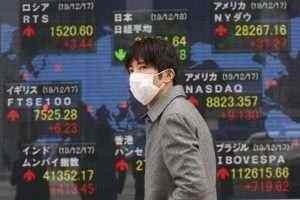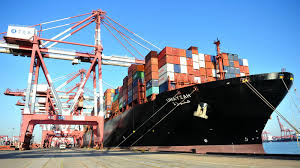

In volatile market conditions, the stop-loss order is executed at a much worse price which results in a higher loss. They are different from stop-limit orders, which are orders to buy or sell at a specific price once the security’s price reaches a certain stop price. Stop-limit orders may not get executed whereas a stop-loss order will always be executed .

So, he will set the stop loss limit from , which will limit his potential loss to 10% of the price. Some stocks trade on very thin volumes which means even if there is a stop loss in place, you may not be able to exit because there is no buyer on the other side. Therefore, buying illiquid stocks has its own set of risks, and using a stop-loss strategy becomes essential. Trailing stop loss order allows investors to set up a stop-loss level that adjusts to the price of the stock as it changes. Long-term investors shouldn’t be overly concerned with market fluctuations because they’re in the market for the long haul and can wait for it to recover from downturns.
Related Terms
Tools are essentially different orders you can place with your brokerage company to protect yourself like “take profit”, “boundary options”, “hedging” and “stop loss”. Because a stop-loss order can’t guarantee an execution price , the order might be filled much lower than the intended price. For example, you buy 100 shares of stock X for $50 and set a stop-loss order for $45. Then, after the market closes, unfavorable company announcements see the stock plummet. As a result, when the market opens the next day, stock X has significantly gapped down (a chart pattern whereby the stock opens below the previous day’s close with no trading activity in between). A stop-loss order, also referred to as a stop order, is a command to buy or sell a security once it reaches a specific price– the stop price.
Therefore, to carry out a stop-limit order, both a limit price and a stop price must be set. A limit order is an instruction to buy or sell a stock at a price that you specify or better. For example, if you want to buy a $50 stock at $48 per share, your limit order will be filled once sellers are willing to meet that price.
Setting a 5% stop-loss order on a stock that has a history of fluctuating 10% or more in a week may not be the best strategy. You’ll most likely just lose money on the commission generated from the execution of your stop-loss order. In this case, you can use a «trailing stop.» The trailing stop can be designated in either points or percentages. The stop order then trails price as it moves up for sell orders, or down for buy orders. Stock trading involves buying and selling shares of publicly traded companies. It typically happens in the United States on exchanges like the New York Stock Exchange or the Nasdaq stock market.
This convenience is especially handy when you are on vacation or in a situation that prevents you from watching your stocks for an extended period. The most important benefit of a stop-loss order is that it costs nothing to implement. Your regular commission is charged only once the stop-loss price has been reached and the stock must be sold. Another disadvantage concerns getting stopped out in a choppy market that quickly reverses itself and resumes in the direction that was beneficial to your position.
If you have a large position in a stock, executing it may be difficult for illiquid security. Therefore, only take positions that you feel comfortable with when you look at the size of that position vis a vis your net worth. At the end of the day, if you are going to be a successful investor, you have to be confident in your strategy. The advantage of stop-loss orders is that they can help you stay on track and prevent your judgment from getting clouded with emotion.

Stop-loss orders also help insulate your decision-making from emotional influences. For example, they may maintain the false belief that if they give a stock another chance, it will come around. Stop-loss orders are a smart and easy way to manage the risk of loss on a trade.
How Does a Stop-Loss Order Limit Loss?
For example, in markets with low liquidity, it can be difficult to execute a stop-loss order at the desired price again resulting in a loss. Another thing to keep in mind is that, once you reach your stop price, your stop order becomes a market order. So, the price at which you sell may be much different from the stop price. This fact is especially true in a fast-moving market where stock prices can change rapidly. A market-on-close order is a non-limit order that is executed as close to the end of the market day as possible. A stop order is an order type that can be used to limit losses as well as enter the market on a potential breakout.
A stop-loss is designed to limit an investor’s loss on a security position. For example, setting a stop-loss order for 10% below the price at which you bought the stock will limit your loss to 10%. If the stock falls below $18, your shares will then be sold at the prevailing market price. The optimal place will allow for some flexibility but will also get you out of a position if the price turns in an unfavorable direction. For example, to protect against excessive losses on a sale, traders may set up a sell-stop order below the current market price. In contrast, a buy-stop order can be placed above the current market rate to acquire stock before it gets too costly.
Weigh the pros and cons of a stop-loss order before deciding whether it’s the right strategy for you. For example, when you risk more in the event the trade loses than you reasonably stand to make if the trade proves to be a winner. From basic trading terms to trading jargon, you can find the explanation for a long list of trading terms here. Additionally, when it comes to stop-loss orders, you don’t have to monitor how a stock is performing daily.
We all have seen the floating ball valve used in water tanks which automatically stops the water flow in the tanks when it reaches a certain level to stop overfilling or spillage. The very same way a stop loss order is a tool that automatically triggers the sale of a security when its price reaches a certain level, known as the stop price. The main disadvantage is that a short-term fluctuation in a stock’s price could activate the stop price. The key is picking a stop-loss percentage that allows a stock to fluctuate day-to-day, while also preventing as much downside risk as possible.
Interested in Blockchain Careers? Explore an Exciting Cryptocurrency World
Determine significant support and resistance levels with the help of pivot points. The Structured Query Language comprises several different data types that allow it to store different types of information… The main purposes of a stop-loss order are to reduce risk exposure and to make trading easier . Her 15-year business and finance journalism stint has led her to report, write, edit and lead teams covering public investing, private investing and personal investing both in India and overseas. She has previously worked at CNBC-TV18, Thomson Reuters, The Economic Times and Entrepreneur. Another restriction with the stop-loss order is that many brokers do not allow you to place a stop order on certain securities like OTC Bulletin Board stocks or penny stocks.
It allows an investor to automatically buy a security once it reaches a certain price. This type of order can be useful for investors who want to enter a position at a specific price point. Investors can create a more flexible stop-loss order by combining it with a trailing stop. A trailing stop is an order whose stop price, rather than being a fixed price, is instead set at a certain percentage or dollar amount below the currentmarket price. So, for instance, as the price of a security that you own moves up, the stop price moves up with it, allowing you to lock in some profit as you continue to be protected from downside risk. Stop orders are a tool that investors use to manage market risk and a convenient way to avoid frequently checking the market to sell once a specific price target is reached.
A stop-limit order is a conditional trade over a set time frame that combines features of stop with those of a limit order and is used to mitigate risk. Agreattrader does that whilealsoavoiding being needlessly stopped out of a trade and thus missing out on a genuine profit opportunity. Find the approximate amount of currency units to buy or sell so you can control your maximum risk per position. Kanika Agarrwal is the co-founder of Upside AI, a fintech start-up focused on using machine learning for the investment sector.
This helps traders avoid larger losses if the price of the security continues to drop. These orders can guarantee a price limit, but the trade may not be executed. This can harm investors during a fast marketif the stop order triggers, but the limit order does not get filled before the market price blasts through the limit price.
At-or-better orders instruct the brokerage to fulfill a transaction only at a specific price or above. Stop-loss orders are used to limit loss or lock in profit on existing positions. Gordon Scott has been an active investor and technical analyst or 20+ years.
Slippage occurs when an order is filled at a price that is different from the requested price. The difference between the expected fill price and the actual fill price is the “slippage”. However,one factor that frequently contributes to a lack of trading success is habitually running stop orderstooclose to your entry point. Placing stop-loss orders wisely is one of the abilities that distinguish successful traders from their peers.
Stop-loss orders can be especially helpful in the event of a sudden and substantial price movement against a trader’s position. It automatically closes a position when the market price reaches a specified level, allowing traders to manage their risk exposure and protect their investments from significant losses. A stop-loss order is a tool used by traders and investors to limit losses and reduce risk exposure. With a stop-loss order, an investor enters an order to exit a trading position that he holds if the price of his investment moves to a certain level that represents a specified amount of loss in the trade. By using a stop-loss order, a trader limits his risk in the trade to a set amount in the event that the market moves against him.
For example, a trader may buy a stock and place a stop-loss order with a stop 10% below the stock’s purchase price. Should the stock price drop to that 10% level, the stop-loss order is triggered and the stock would be sold at the best available price. A stop-loss order is a type of order used by traders to limit their loss or lock in a profit on an existing position. A market order is a trade executed at or near the current bid or ask price in the marketplace during regular trading hours. Unfortunately, however, in rapidly-changing markets, the price you saw or quoted might differ from what you get. A stop-loss order is meant to protect you from loss if the market moves too far in the wrong direction.